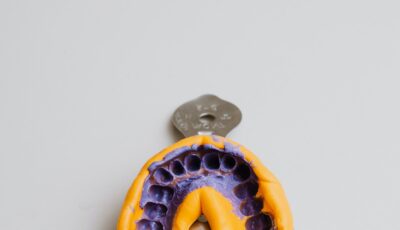
Maintaining good oral hygiene in children is crucial for their health and well-being. Poor oral hygiene can lead to dental problems, including tooth decay, bad breath, and gum disease. Dentists stress the importance of instilling good oral hygiene habits in kids from their tender years. Doing so saves them from dental problems and ensures they grow up taking good care of their teeth. Let’s delve into how you can maintain good oral hygiene in kids.
Starting Dental Care Early
The foundation of good oral hygiene is laid during infancy. Parents are advised to gently wipe an infant’s gums with soft, wet washcloths. As soon as the first teeth appear, clean them daily. Regular cleaning helps in keeping bacterial infections and other dental diseases at bay. Pediatric dentistry recommends starting dental check-ups by age one.
Pediatric dentistry focuses on providing gentle dental care to kids. This involves making every dental visit as comfortable as possible. Such a welcome experience can help kids overcome dentist visits fear and anxiety, encouraging regular check-ups.
Teaching Kids the Right Way To Brush and Floss
1. Brushing
Teaching children the correct teeth-brushing technique is crucial for maintaining optimal oral hygiene. Here‘s how to guide them:
- 45-Degree Angle: Show your child how to hold the toothbrush at a 45-degree angle against the gumline. This helps clean the area where the teeth meet the gums, preventing plaque buildup.
- Use Gentle Back and Forth Strokes: Instruct your child to use gentle back-and-forth strokes to clean each tooth’s outer, inner, and chewing surfaces. Emphasize the importance of being thorough but gentle to avoid damaging the gums.
- Brush the Tongue and Roof of the Mouth: Encourage your child to brush their tongue and the roof of their mouth to remove bacteria and keep their breath fresh.
- Brush for Two Minutes: Help your child understand the importance of brushing for at least two minutes during each session. You can use a timer or play their favorite song to make brushing more enjoyable.
2. Flossing
Flossing is equally important for cleaning the spaces between teeth where a toothbrush can’t reach. Here’s how to teach your child to floss effectively:
- Use Enough Floss: Show your child how to pull about 18 inches of dental floss and wind it around their middle fingers, leaving a small section to work with.
- Gentle and Controlled: Instruct them to gently insert the floss between their teeth using a sawing motion. Emphasize the need to be gentle to avoid injuring the gums.
- Form a C-Shape: Teach your child to curve the floss into a C-shape around each tooth and move it up and down. This motion helps clean both sides of the tooth and the area just below the gumline.
- Use Clean Sections: Remind them to use a clean section of floss for each tooth to avoid transferring plaque or debris.
- Be Patient: Flossing might initially feel awkward, but your child will become more comfortable and efficient with practice.
3. Supervision and Assistance
For younger children, it’s important to supervise and assist them with brushing and flossing until they have developed the necessary motor skills to do it effectively on their own. Make it a fun and interactive activity to encourage their cooperation.
By teaching your children the right way to brush and floss from an early age, you’re instilling good oral hygiene habits that will serve them well throughout their lives.
Teaching About the Importance of a Healthy Diet
A healthy diet is key to good oral health. Teach your kids to limit sugary and starchy foods that can lead to cavities. Encourage them to drink plenty of water to wash off residual food particles, especially after meals. Regular intake of fruits, vegetables, and dairy products keeps the gums healthy and teeth strong.
Let Kids Understand the Hazards of Bad Oral Practices
Kids love candies, cookies, and sodas, which harm their dental health. Educate them about the hazards of such practices and encourage good ones like rinsing their mouth after eating sweets. Additionally, discourage them from thumb-sucking and excessive use of pacifiers that can lead to teeth misalignment.
Thanks to modern dentistry, kids facing orthodontic issues have several braces options for kids to choose from, right from traditional metal braces to the more discreet, clear types. Early detection and treatment of misaligned teeth can prevent problems like difficulty in cleaning, cavities, and improper chewing.
Regular Dentist Visits
Regular dental visits ensure children’s long-term oral health and well-being. These visits, typically recommended at least twice a year, offer a range of benefits that contribute to maintaining healthy teeth, gums, and overall oral hygiene.
- Early Detection of Issues: Regular dental check-ups allow dentists to detect potential dental problems in their early stages. Whether it’s a minor cavity, early signs of misalignment, or bite irregularities, catching these issues early allows for timely and less invasive treatments. This proactive approach prevents problems from escalating into more serious conditions that may require extensive interventions.
- Monitoring Dental Development: Children’s mouths are in a constant state of development. Regular dental visits allow dentists to closely monitor this development, ensuring that teeth grow properly and jaws align as they should. Identifying deviations from the expected growth pattern early on can lead to corrective actions guiding the natural growth process.
- Preventive Care and Education: Dental check-ups allow professional cleanings, which remove plaque and tartar buildup that can’t be fully addressed through regular brushing and flossing alone. Additionally, these visits offer a platform for oral hygiene education. Dental professionals can teach children the correct way to brush and floss, emphasize the importance of a balanced diet for oral health, and address any questions or concerns parents and children might have.
- Establishing Positive Habits: Frequent exposure to dental visits helps children become familiar with the dental environment, reducing anxiety and fear associated with dental care. This familiarity establishes a positive foundation for their future oral health practices. Children who grow up accustomed to regular dental visits are more likely to continue prioritizing their oral health as they transition into adulthood.
- Customized Care: Pediatric dentists are attuned to the unique needs of growing children. Every child’s dental development is distinct, and regular visits allow these dental professionals to provide personalized recommendations and treatments. Whether it’s a discussion about pacifier use, thumb sucking, or the timing of orthodontic intervention, pediatric dentists tailor their guidance to suit each child’s circumstances.
- Professional Guidance for Parents: Parents play a pivotal role in their child’s oral health journey. Regular dental visits offer an opportunity for parents to seek professional guidance. Dental professionals can address concerns, answer questions, and provide practical advice on maintaining optimal oral hygiene habits and supporting the child’s dental development at home.
- Early Orthodontic Intervention: Dental visits can uncover the need for early orthodontic intervention. Identifying potential orthodontic issues allows for timely treatment that can guide teeth and jaws into more favorable positions, potentially minimizing the need for more extensive orthodontic work later.
- Monitoring Oral Hygiene Habits: Dentists can evaluate how well a child practices oral hygiene at home and offer guidance for improvement. This real-time feedback helps children refine brushing and flossing techniques, ensuring effective plaque removal and promoting optimal oral health.
Regularly taking your child to a trusted pediatric dentist is essential for oral health. A pediatric dentist will examine for possible dental issues and provide preventive dental care like cleaning and fluoride treatments. To find a suitable dentist near you, just click here.
Using Fluoride Toothpaste
Fluoride toothpaste strengthens tooth enamel and prevents cavities. Start using a pea-sized amount of fluoride toothpaste when the child turns three and teach them not to swallow it.
Conclusion
Good oral hygiene in kids can set the stage for lifelong dental health. You can help your child maintain a sparkling smile by instilling these habits early. Remember, a healthy mouth is part of a healthy body, and taking good care of it is well worth the effort.





